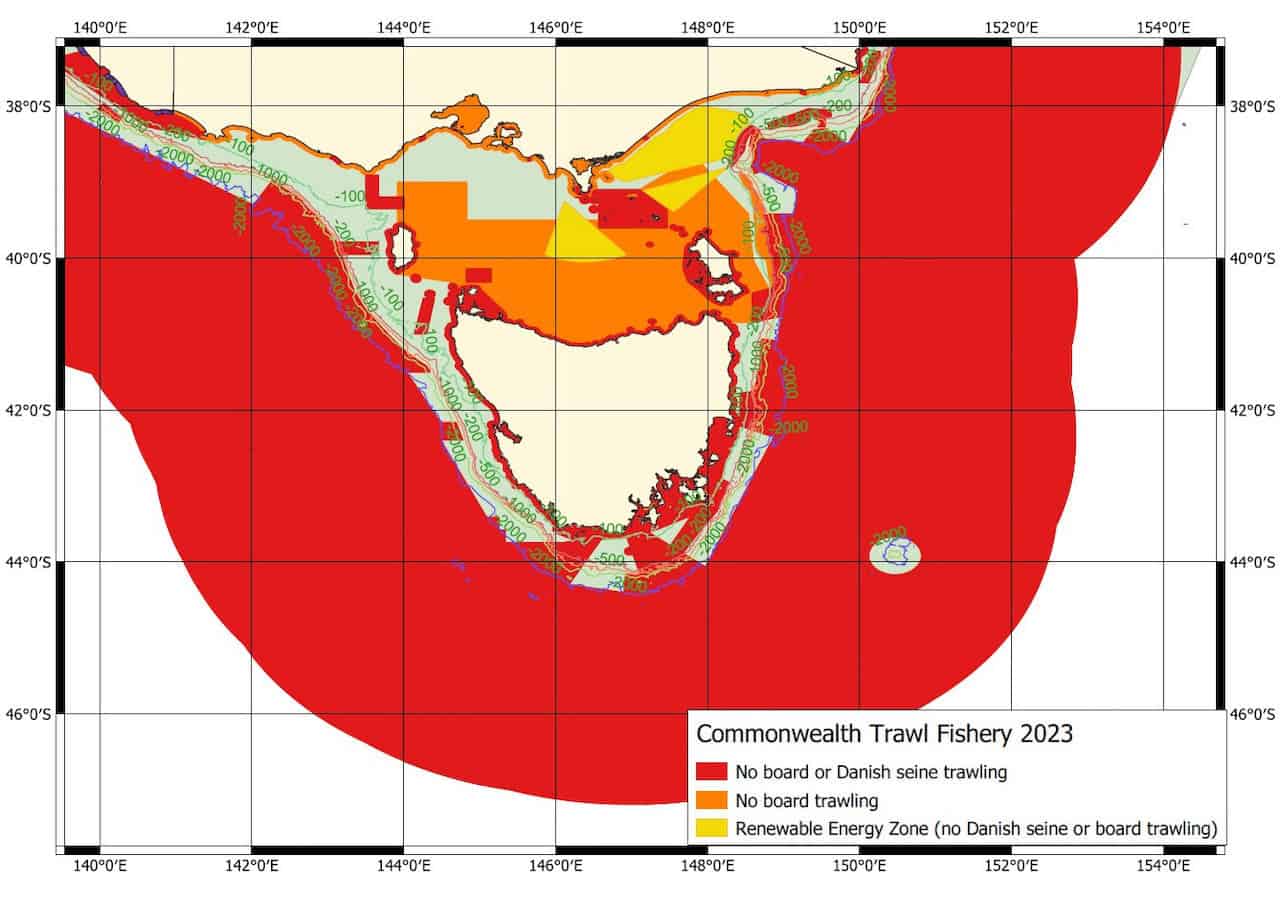More marine park impacts will reduce fish supply and jobs in rural towns – they do not address the actual risks facing the marine environment, warns Simon Boag of the Southern Shark Industry Alliance (SSIA) and South East Trawl Fishing Industry Association (SETFIA).
‘Australia’s Department of the Environment has announced a review and potential expansion of fishing lock-outs in South-East Australia’s 17 year-old marine park network. The network covers more than 388,000 square kilometres – an area almost six times larger than Tasmania,’ he said, commenting that Australians living in South-East Australia have access to only around three local wildcatch seafood meals each per annum.

‘The Australian Government already acknowledges that 70% of seafood consumed in Australia is imported, with many questions being raised about the standards surrounding the harvesting, labelling and production of imported seafood.’
Marine parks already cover 43% of the South-East, and 48% of Australia’s entire marine estate, and this coverage is already in excess of Australia’s Kunming-Montreal commitment of 30% by 2030.
‘Locking up additional areas of marine habitat does nothing to address climate change, which research clearly shows is the greatest risk facing south-east marine environments,’ the organisations state.
‘The heavily regulated and transparent Australian fishing industry is being squeezed by other industries such as oil and gas, marine seismic surveys, aquaculture, electricity transmission, carbon storage and most recently marine windfarms.
The fishing industry has been working in partnership with the windfarm sector to help them understand windfarm overlap with fishing grounds and to try to minimise it where possible. Renewable energy mitigates climate change, but more marine parks do not,’ Simon Boag said.
According to SSIA and SETFIA, the Australian Government’s South East Trawl and Flake fisheries provide most of the fresh local wildcaught fish consumed on the eastern seaboard of Australia. Over the last twenty years they have lost 85% and 90% of the grounds they had twenty years ago.
‘The trawl fishing industry only fishes 6% of the grounds once available to it – literally slithers of areas originally allocated for seafood production. Available grounds will drop further when windfarms come on line in Gippsland in five years and then later in Portland and elsewhere,’ he commented, adding that habitat forming seafloor invertebrates are assessed by CSIRO as being at 82-95% of their pre-fishing biomass and continuing their recovery.
‘The fishing industry relies on the Environment Minister to consider the fishing industry, rural communities and fish consumers and to not impose more marine park impacts. The Minister’s alternative is additional pointless fishing lock-outs, loss of cultural identity in rural communities, reduced productivity, increased imports, and less local seafood meals,’ he said.
‘There is not enough space in the ocean for fresh local seafood supply, marine windfarms, and more marine park lock-outs.’









